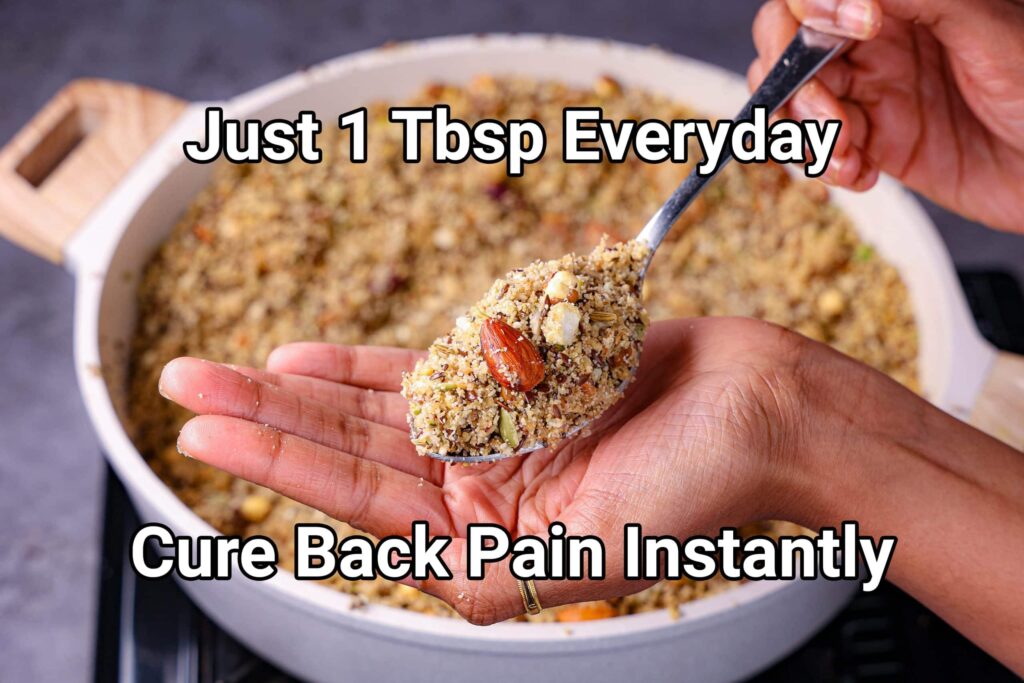Hey there! If you’ve ever experienced the discomfort of back pain, you know just how much it can disrupt your everyday life. But fret not, because in this article we’re going to explore the world of home remedies for back pain. From simple stretches and exercises to alternative therapies and natural remedies, we’ve got you covered. So, if you’re tired of relying on pain medications or seeking professional help every time your back acts up, read on to discover some effective and accessible solutions that you can try in the comfort of your own home. It’s time to bid farewell to that stubborn back pain and say hello to a pain-free life!

Natural remedies for back pain
Hot and cold therapy
Hot and cold therapy can be effective in relieving back pain. Applying heat to the affected area can help relax muscles and increase blood flow, while cold therapy can reduce inflammation and numb the area. You can use a hot water bottle or a heating pad for heat therapy, and ice packs or cold compresses for cold therapy. Alternate between hot and cold treatment for 15-20 minutes each, several times a day, to find relief.
Stretching and strengthening exercises
Stretching and strengthening exercises can help alleviate back pain and prevent future episodes. Gentle stretches targeting the back, such as knee-to-chest stretches and cat-camel stretches, can improve flexibility and relieve tension. Strengthening exercises, like bridges and planks, can help stabilize the spine and support the back. It’s crucial to consult with a healthcare professional or a licensed physical therapist to ensure you’re performing the exercises correctly and avoid exacerbating the pain.
Regular physical activity
Engaging in regular physical activity can be beneficial for managing and preventing back pain. Low-impact exercises like walking, swimming, or cycling help strengthen the muscles that support the back without putting excessive strain on it. Aim for at least 30 minutes of moderate-intensity exercise most days of the week, but listen to your body and do what feels comfortable. Remember to warm up before exercising and cool down afterward to prevent any further muscle pain or strain.
Essential oils and aromatherapy
Essential oils are known for their soothing properties and can be used as a natural remedy for back pain. Certain oils, such as peppermint, lavender, and eucalyptus, have anti-inflammatory and analgesic properties that can help reduce pain and inflammation in the back. You can dilute a few drops of essential oil in a carrier oil, like coconut or jojoba oil, and massage it gently into the affected area. Alternatively, you can add a few drops of essential oil to a diffuser or a warm bath for aromatherapy benefits.
Epsom salt baths
Taking a relaxing Epsom salt bath can provide relief from back pain. Epsom salt, also known as magnesium sulfate, can be dissolved in warm water, and the magnesium present in it can be absorbed through the skin. Magnesium is known to relax muscles and reduce inflammation, which can help ease back pain. Soaking in an Epsom salt bath for 15-20 minutes a few times a week can aid in relaxation and alleviate muscle soreness in the back.
Herbal remedies for back pain
Turmeric
Turmeric, a yellow spice commonly used in Indian cuisine, contains a compound called curcumin, which has potent anti-inflammatory properties. Consuming turmeric or curcumin supplements can help reduce inflammation and relieve back pain. You can incorporate turmeric into your diet by adding it to curries, soups, or smoothies. However, it’s important to consult with a healthcare professional before starting any new supplements to ensure they are safe for you.
Ginger
Ginger is another herb that possesses anti-inflammatory and analgesic properties, making it beneficial for managing back pain. You can consume ginger in various forms, such as fresh ginger root, ginger tea, or ginger supplements. Adding ginger to your meals or drinking ginger tea regularly can help reduce inflammation and alleviate pain associated with back problems. As with any herbal remedy, it’s best to consult with a healthcare professional before adding ginger to your routine, especially if you have any underlying health conditions or take medications.
Devil’s claw
Devil’s claw is an herb native to Africa that has been used for centuries to treat various inflammatory conditions. It contains compounds with analgesic and anti-inflammatory effects, making it useful for relieving back pain. Devil’s claw can be taken as a supplement or consumed as a tea. However, it’s essential to consult with a healthcare professional before using devil’s claw, as it may interact with certain medications and should be used cautiously in individuals with certain medical conditions.
White willow bark
White willow bark has been used for centuries as a natural pain reliever due to its high content of salicin, a compound similar to aspirin. Consuming white willow bark in the form of capsules, tea, or extracts can help alleviate back pain. However, individuals who are allergic to aspirin or have certain medical conditions should exercise caution and consult with a healthcare professional before using white willow bark.
Dietary remedies for back pain
Anti-inflammatory foods
Incorporating anti-inflammatory foods into your diet can help reduce inflammation and alleviate back pain. Foods rich in omega-3 fatty acids, such as salmon, walnuts, and chia seeds, are known for their anti-inflammatory properties. Other foods that can help fight inflammation include brightly colored fruits and vegetables, whole grains, and healthy fats like olive oil. Avoiding processed foods, refined sugars, and excessive consumption of red meat can also contribute to a more anti-inflammatory diet.
Bone-strengthening foods
Consuming foods rich in calcium, vitamin D, and other essential nutrients can help strengthen your bones and support spine health, ultimately reducing the risk of back pain. Dairy products like milk, cheese, and yogurt, as well as leafy greens, tofu, and fortified cereals, are excellent sources of calcium. Vitamin D can be obtained through exposure to sunlight or by consuming fatty fish, egg yolks, and fortified foods.
Hydration
Staying hydrated is crucial for overall health and can also benefit your back. Water helps maintain the elasticity of spinal discs and promotes proper joint function. Dehydration can lead to muscle cramps and stiffness, which can worsen back pain. Aim to drink at least eight glasses of water per day and increase your fluid intake if you are physically active or in hot weather.
Lifestyle changes for back pain relief
Maintaining good posture
Maintaining good posture is essential for preventing and managing back pain. Be conscious of how you sit, stand, and walk throughout the day. Practice sitting with your back straight, shoulders relaxed, and both feet flat on the floor. When standing, distribute your weight evenly on both feet, and avoid slouching. Using ergonomic chairs and supportive pillows can also help improve posture and reduce strain on your back.
Avoiding prolonged sitting and heavy lifting
Prolonged sitting and heavy lifting can put excessive strain on the back and contribute to back pain. If your job requires sitting for long periods, make sure to take regular breaks and stretch or walk around. When lifting heavy objects, remember to lift with your legs and not your back, and ask for assistance if needed. By avoiding prolonged sitting and properly lifting heavy objects, you can protect your back from unnecessary strain.
Using supportive equipment
Using supportive equipment can make a significant difference in managing back pain. Consider using a firm mattress that provides proper spinal alignment. If you have a desk job or spend a lot of time sitting, using an ergonomic chair with lumbar support can help maintain a neutral spine position and reduce strain on the back. Additionally, using a supportive pillow, either under your neck while sleeping or providing lumbar support while sitting, can provide relief and prevent further discomfort.
Stress reduction techniques
Stress can contribute to back pain by causing muscle tension and promoting inflammation. Incorporating stress reduction techniques into your daily routine can help manage and prevent back pain. Techniques such as deep breathing exercises, meditation, yoga, or engaging in hobbies and activities that you enjoy can all help reduce stress levels. Find what works best for you and make time for regular relaxation to support a healthy body and mind.

Alternative therapies for back pain
Acupuncture
Acupuncture is an ancient Chinese practice that involves inserting thin needles into specific points on the body to alleviate pain and promote healing. It is believed to stimulate the release of endorphins, which are natural pain-relieving chemicals in the body. Many people find acupuncture beneficial for relieving back pain, though individual results may vary. It’s important to seek a qualified and licensed acupuncturist to ensure safety and effectiveness.
Chiropractic care
Chiropractic care focuses on the alignment of the spine and musculoskeletal system to alleviate pain and promote overall well-being. Chiropractors use manual manipulation techniques to adjust the spine and other joints, aiming to relieve back pain caused by misalignments. Regular chiropractic visits can help improve posture, reduce muscle tension, and enhance spinal function. It is essential to seek care from a licensed and experienced chiropractor for optimal results.
Massage therapy
Massage therapy can provide temporary relief from back pain by targeting areas of muscle tension and promoting relaxation. Different massage techniques, such as Swedish massage, deep tissue massage, or myofascial release, can be beneficial depending on the type and cause of your back pain. Regular massages can help reduce muscle stiffness, increase blood flow, and promote healing. It’s important to choose a licensed massage therapist who specializes in treating back pain.
Yoga and Pilates
Yoga and Pilates are low-impact exercises that focus on strength, flexibility, and balance. These practices can help improve posture, increase core strength, and alleviate back pain. Specific poses and exercises, like the cat-camel stretch, child’s pose, and the Pilates bridge, can target the back muscles and promote relief. It’s important to practice under the guidance of a qualified instructor who can tailor the exercises to your individual needs and ensure proper form to prevent further injury.
Over-the-counter remedies for back pain
Nonsteroidal anti-inflammatory drugs (NSAIDs)
Nonsteroidal anti-inflammatory drugs, such as ibuprofen or naproxen, can help relieve back pain by reducing inflammation and alleviating discomfort. These medications can be effective for short-term relief, but it’s essential to use them as directed and avoid prolonged use, as they can have side effects. If you have any underlying health conditions or take other medications, consult with a healthcare professional before using NSAIDs.
Topical analgesics
Topical analgesics, such as creams, gels, or patches, can provide localized relief for back pain. These products often contain ingredients like menthol or capsaicin, which provide a cooling or warming sensation that helps distract from the pain. Applying topical analgesics to the affected area can offer temporary relief and may be a suitable option for individuals who prefer not to take oral medications. However, it’s important to follow the instructions and consult with a healthcare professional if you have any concerns.

Home remedies for acute back pain
Rest and relaxation
When experiencing acute back pain, it’s important to give your body time to rest and recover. Avoid activities that worsen the pain and find a comfortable position that eases the discomfort. Resting and allowing your body to heal is crucial during this time. However, too much rest and inactivity can also be detrimental, so it’s important to strike a balance and gradually resume light activities as the pain subsides.
Applying heat or ice
Applying heat or ice to the affected area can provide relief from acute back pain. Heat therapy helps relax muscles and increase blood flow to the area, while cold therapy can reduce inflammation and numb the pain. You can use a heating pad, warm towel, or hot water bottle for heat therapy, and ice packs or cold compresses for cold therapy. Alternate between the two for 15-20 minutes each, several times a day, to find the most effective pain relief.
Over-the-counter pain relievers
Over-the-counter pain relievers, such as acetaminophen or ibuprofen, can help alleviate acute back pain. These medications can be taken orally and provide temporary relief from pain and inflammation. It is important to follow the recommended dosage instructions and consult with a healthcare professional if you have any underlying health conditions or take other medications to avoid adverse effects.
Home remedies for chronic back pain
Exercise and physical therapy
Regular exercise, tailored to your specific needs and abilities, can help manage chronic back pain. Physical therapy exercises, such as stretching, strengthening, and low-impact cardiovascular activities, can improve muscle flexibility, strengthen the core, and promote overall spine health. Consult with a healthcare professional or a licensed physical therapist to design an exercise program that addresses your unique condition and goals.
Mind-body techniques
Mind-body techniques, such as meditation, deep breathing exercises, or guided imagery, can help manage chronic back pain by reducing stress, promoting relaxation, and redirecting focus away from the pain. Practicing mindfulness and engaging in activities that promote mental and emotional well-being, such as yoga or tai chi, can also be beneficial in managing chronic back pain. It’s important to explore different mind-body techniques and find what works best for you.
Applying herbal creams or oils
Applying herbal creams or oils to the affected area can provide relief from chronic back pain. Certain creams or oils containing ingredients like arnica, menthol, or camphor can help alleviate pain and reduce inflammation. These products can be massaged into the back gently, providing a soothing sensation and potentially reducing discomfort. However, it’s crucial to check for any allergic reactions or adverse effects before using these products extensively.

Preventive measures for back pain
Regular exercise and stretching
Regular exercise and stretching are crucial for preventing back pain. Engaging in activities that promote flexibility, strength, and good posture can help maintain the health and integrity of the back muscles and joints. Incorporate a combination of cardiovascular exercises, strength training, and stretching into your routine to keep your back strong and flexible. Consult with a healthcare professional or a licensed physical therapist to develop a customized exercise and stretching plan.
Maintaining a healthy weight
Excess weight can strain the back and increase the risk of back pain. Maintaining a healthy weight can help reduce stress on the spine and decrease the likelihood of developing chronic back problems. Focus on maintaining a balanced diet and regular exercise routine to achieve and maintain a healthy weight. Consulting with a registered dietitian can also provide guidance on proper nutrition and portion control.
Using ergonomic furniture and tools
Using ergonomic furniture and tools can significantly contribute to back pain prevention. Ensure that your workspace is set up ergonomically, with an adjustable chair, proper lumbar support, and a desk that allows you to maintain good posture. When lifting heavy objects, using proper lifting techniques and equipment, such as lifting belts or back braces, can help protect your back from injury. Make ergonomic adjustments in your daily life to support your spine’s health.
Avoiding excessive strain on the back
Avoiding excessive strain on the back is crucial for preventing back pain. Be mindful of your body mechanics and avoid activities that require repetitive bending, lifting, or twisting. When performing physical tasks, such as gardening or cleaning, take regular breaks, use proper techniques, and seek assistance when needed. Additionally, maintaining good posture, practicing safe lifting techniques, and avoiding sudden movements can all contribute to reducing strain on the back.
Conclusion
Back pain can be debilitating and affect your quality of life. While seeking medical advice is important for severe or persistent back pain, there are various natural and home remedies that can help alleviate symptoms and promote recovery. From hot and cold therapy to herbal remedies, dietary changes, lifestyle modifications, and alternative therapies, there are numerous options to explore. Remember to consult with a healthcare professional before starting any new treatment or remedy, especially if you have underlying health conditions or are taking medications. By incorporating these remedies and preventive measures into your routine, you can take control of your back health and find relief from pain.

